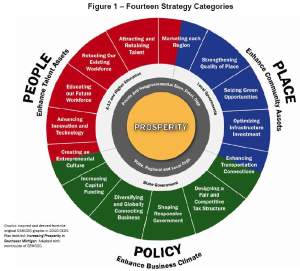People count: Population growth leads to basic economic growth, part 3
Population growth is economic growth, which makes taking steps to attract people to move to a community an important strategy.

Attracting people to live in your area is one of the most basic and important economic development strategies. Population attraction strategies can take many forms, but keeping in mind the fundamentals can help your community prosper.
It seems obvious to say it, but each time someone moves to your community, that is economic growth. That person is a new customer that pays for food and services, patronizes local businesses, gets their car fixed, attends activities, invites others to visit them, and more. Likewise, if people move away, that hurts the local economy.
A state, county, or community that is shrinking in population faces greater challenges in growing economically. Also, consider that in the new economy, many people choose where they want to live, move there, and then look for work, or become entrepreneurs and create their own employment. And people choose to move to quality places.
So, a new economy development strategy is to attract people. There are finer details in this broad strategy that help guide initiatives and accomplish goals. First, any growth in population equates to economic growth. Second, by focusing on certain population groups, your community can adopt more specific policies that align with groups’ preferences.
One large group that communities focus on attracting are new retirees. Retirees are one of the most prolific population groups that produce entrepreneurs – people who start new businesses and employ others. This should not be a surprise. This age group has a lifetime of experience and skills, and many have savings or connections for having the funds to start new ventures.
Young adults are another group that some communities focus on attracting. They represent a talent pool, potentially with training, certifications, or degrees – what advanced industry is looking for in a community where they might locate. Communities hoping to attract and retain younger adults are familiarizing themselves with a variety of different preferences this population has with both housing options and community assets. Walkable communities are attractive for multiple age groups; millennials as a group reported high interest in this as shared by the National Association of Realtors 2023 “Community and Transportation Preferences Survey.”
Beyond specific age groups, communities are broadly promoting their attributes as a way to market themselves to new and returning residents. Some examples of this include developing fast fact sheets and website pages that highlight key amenities and desirable data like safety, housing options, and access to resources like education and healthcare. Here in Michigan, Macomb County’s dedicated page on their website, “Why move to Macomb County,” is an example of this.
The ultimate local goal for the new economy is to attract and retain these people, which also serve as community assets. For growth in the new economy, a community and region should have a deliberate, purposeful, formally-adopted population attraction strategy. Such a strategy may involve many of the same things the community does to attract tourists, attract medical staff to a local hospital, and more.
What attracts people to a town, county and region? The same things that have already been pointed out in this series: green and blue infrastructure, vibrant downtowns, arts, culture, activities and things to do. But more specifically, it comes down to “place matters.” People are attracted to a place. The types of places which are popular and successful in getting new population have the following:
- Entrepreneurial infrastructure – a community that is supportive of new businesses startups and has programs such as economic gardening in place
- Social infrastructure – a community with social activities, events and things to do
- Public transportation infrastructure – a choice as to how one gets around the community; not just by automobile, but also via bikes, walking, and public transportation to and between amenities
- Variety of housing – a choice of different types of housing, not just single-family homes on lots, but also housing downtown, apartment buildings, and so on (what is important is to provide choice)
- Information technology infrastructure – high-speed internet
- Collaborative capacity – a community that works together and has many collaborative and cooperatives efforts for accomplishing community-wide projects
In the next part of this article series, we will focus more on place, place matters, and placemaking.
Educators with Michigan State University Extension that focus on land use provide various training programs on planning and zoning, which are available to be presented in your county. Contact your local land use educator for more information.



 Print
Print Email
Email







